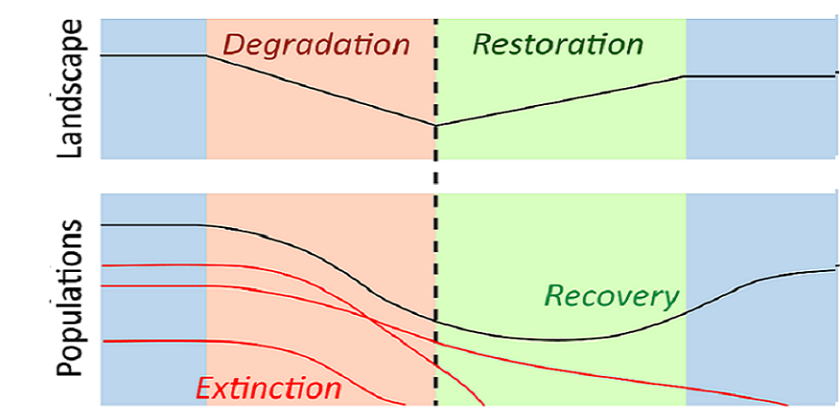Department Systems Analysis, Integrated Assessment and Modelling
Stemming the extinction debt

In the Anthropocene, the habitat of many species is impaired and fragmented, and biodiversity continues to decline in spite of concerted conservation action. Metapopulation theory can capture dynamic fragmentation effects. Species declines are often ongoing as metapopulations respond to environmental change with time lags, leading to extinction debts. Time-delayed extinctions also offer windows of opportunity to prevent extinction with conservation measures. However, species are likely to respond also to positive landscape change with time delays, creating colonization credits. This complicates the assessment of the effectiveness or sufficiency of conservation measures and the setting of realistic targets.
Since conservation usually targets declining species, the rate of past and ongoing declines and the current time to extinction/ distance from an extinction threshold, likely affect the rate of response to conservation action and potentially the required amount of positive environmental change. To understand time-delayed responses to conservation action we will generate insights into (1) how current transient dynamics affect the power of conservation actions to halt and reverse declines and enable long-term viability, and (2) on what time scales we can expect conservation action to show effects (population stabilization or recovery), in relation to species characteristics and the conservation action implemented.


